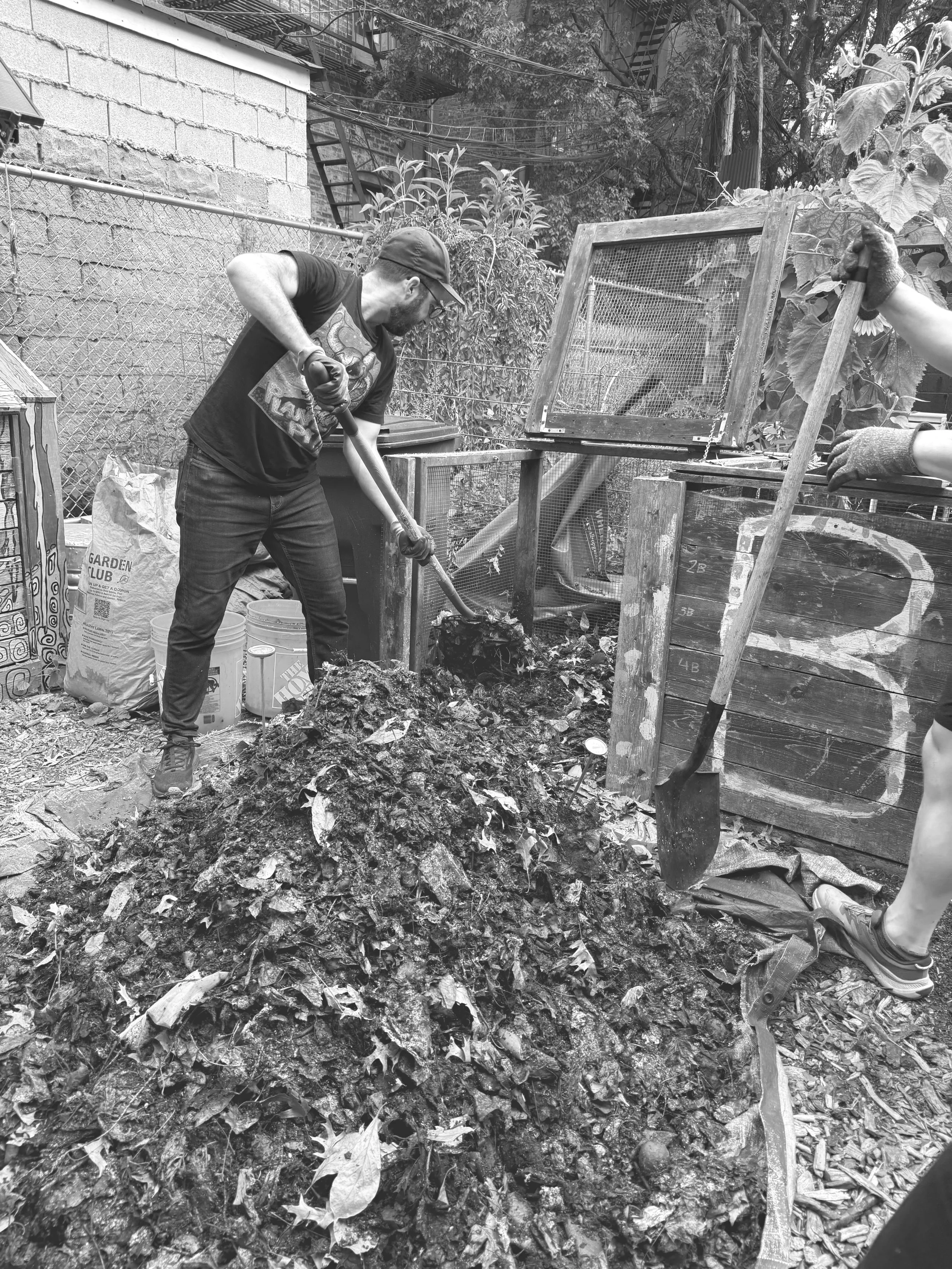Gourds, Greenhouse Gas, and a Honda Accord’s Worth of Scraps
Happy Spooky Season, Decomposers
Welcome back to the bins.
Speaking of bins, (humble brag time) from April through September our community has donated 4,229.25 pounds of food scraps to the compost bins (and the worm bin!). That’s more than two tons of peels, stems, coffee grounds, and leftovers turned into living soil instead of landfill waste. For reference, that’s about the size of a Honda Accord!
Every banana peel, apple core, avocado pit, and frankly heroic amount of coffee grounds (this author might have an addiction) has played a role in building a stronger, greener neighborhood. The garden beds at Maple Street Community Garden this summer were positively breathtaking.
Photo by Jess Frost
As gardening season winds down, the bins are busy this time of year humming with quiet chaos. Inside, an entire ecosystem is hard at work, turning scraps into gold (or a very powerful soil amendment, basically the same thing). Microbes, worms, and fungi are breaking everything down into rich, healthy compost that will feed next season’s plants. It’s a network of transformation, fueled by oxygen, moisture, and your leftovers. The pile heats up, breathes, cools down, then starts all over again. Nature doing the thing. It’s the full circle of what we eat, how we live, and what we give back to the earth.
Photo by Jess Frost
And since we’re talking about that cycle, here’s your gentle reminder to eat and compost your pumpkins.
As your Halloween décor starts to slump and decay, think twice before tossing it. There are endless ways to give your pumpkins a second life. Roast the seeds, make pumpkin bread, blend it into soup, or bake some treats for your dog. (The internet is absolutely crawling with recipes.) Once you’ve gotten all you can out of it, bring what’s left to the Maple Street Community Garden on Saturdays between 10:30 a.m. and 12:30 p.m. (Open through 12/20) Every pumpkin that skips the landfill cuts down methane emissions and adds nutrients back into our shared soil. (Worms like pumpkin treats too.)
If you’ve ever wondered why it matters, here’s the deal: when organic stuff like pumpkins ends up in landfills, it breaks down without oxygen and releases methane—a greenhouse gas that’s over 25 times stronger than carbon dioxide.
Composting, on the other hand, keeps oxygen flowing through the pile so the microbes can do their work. It’s one of the simplest, most tangible ways to fight climate change from a smaller scale.
More than one billion pounds of pumpkins end up in U.S. landfills each year after Halloween, according to the Department of Energy (AP News October 2025). Let’s make sure ours don’t!
Photo by Justin Moore
As we head into the final stretch of the composting season before the winter solstice, take a moment to think about what 4,229 pounds of scraps really means. It’s not just waste diverted. It’s community effort, environmental impact, and shared care in physical form. It’s proof that small actions build big results.
Thank you for helping us reach this milestone, for keeping the bins alive and thriving, and for showing up week after week with buckets in hand. Thank you for reading this blog, and for believing that change grows from the ground up.
We’ll see you at the bins.
With grit and gratitude,
Jess Frost
MSCG Communication Committee



